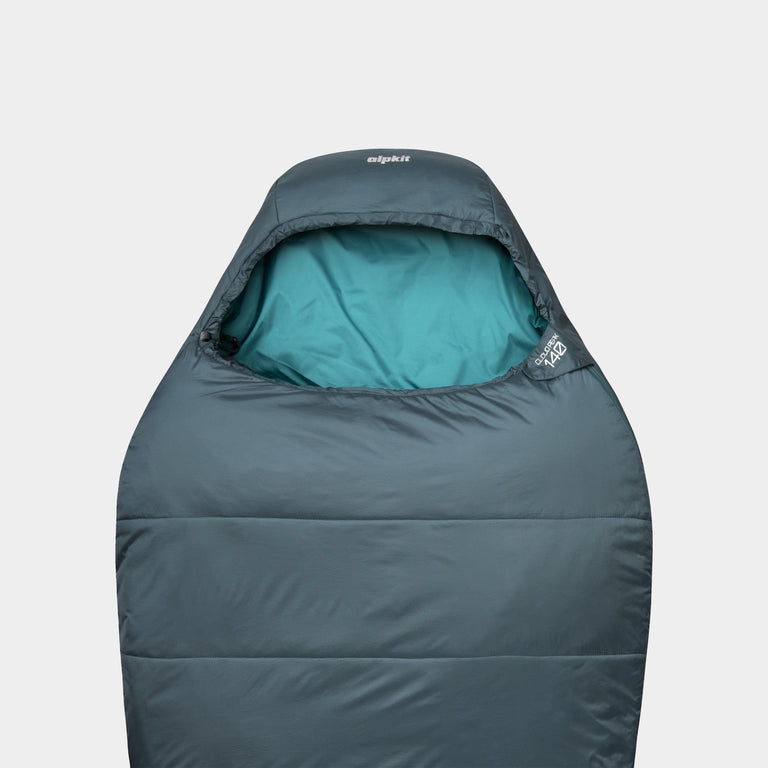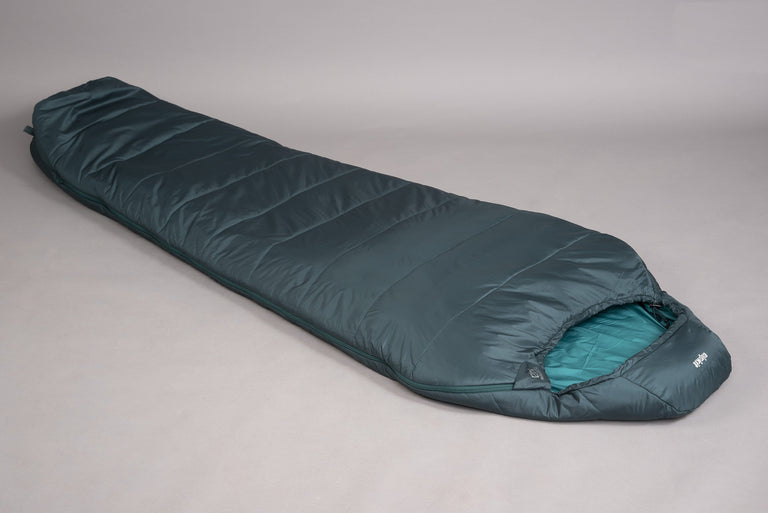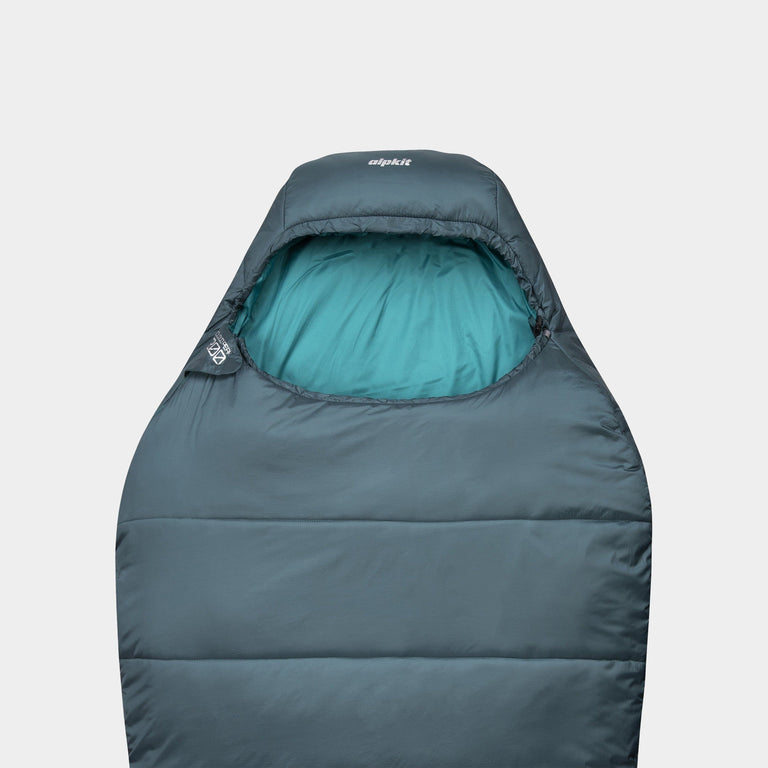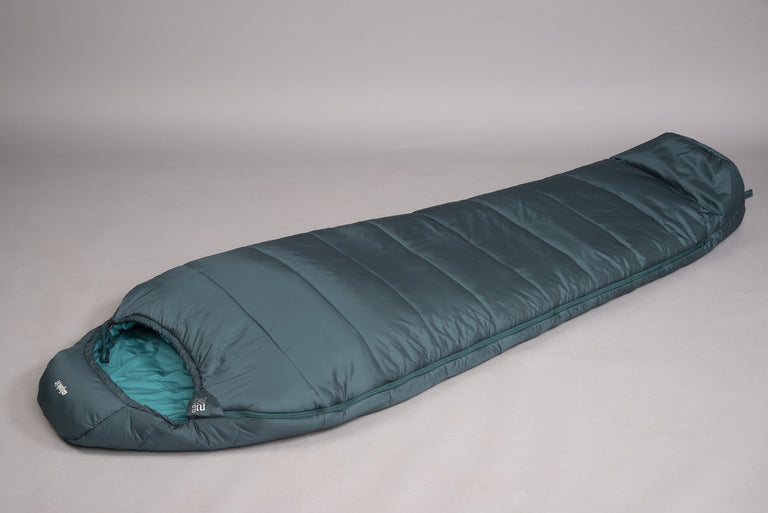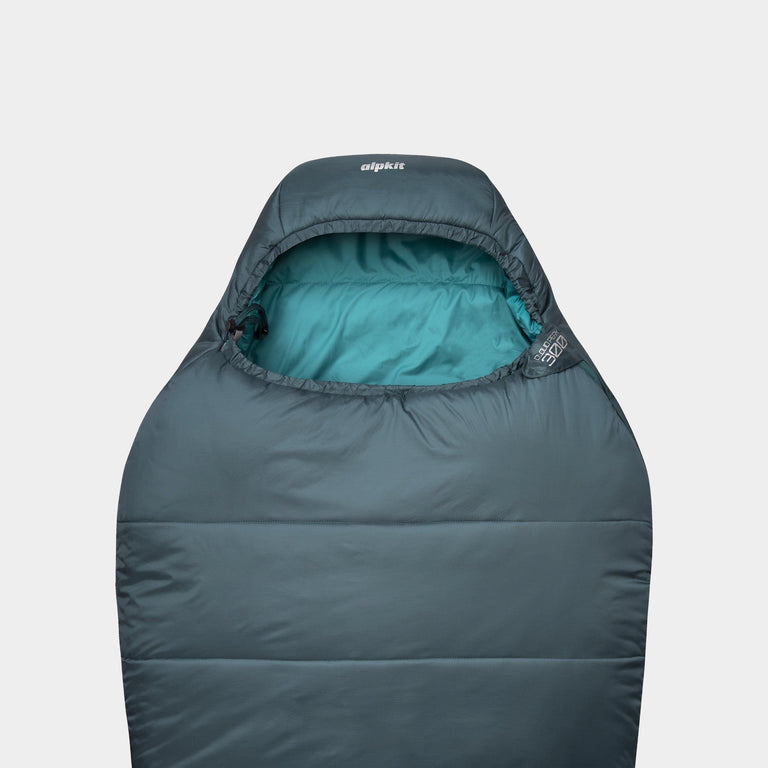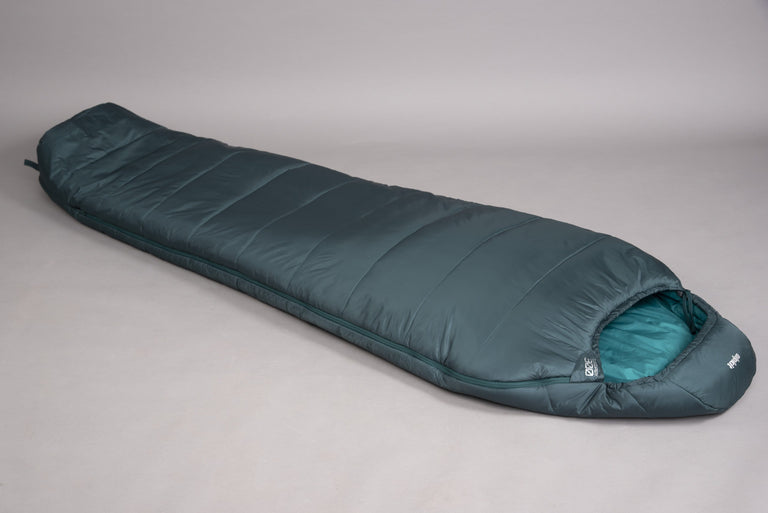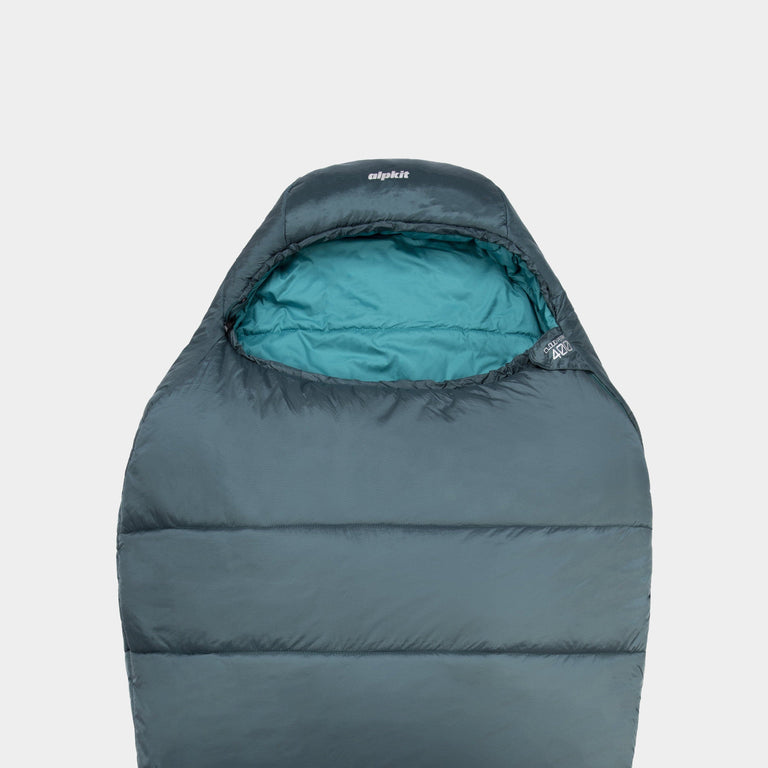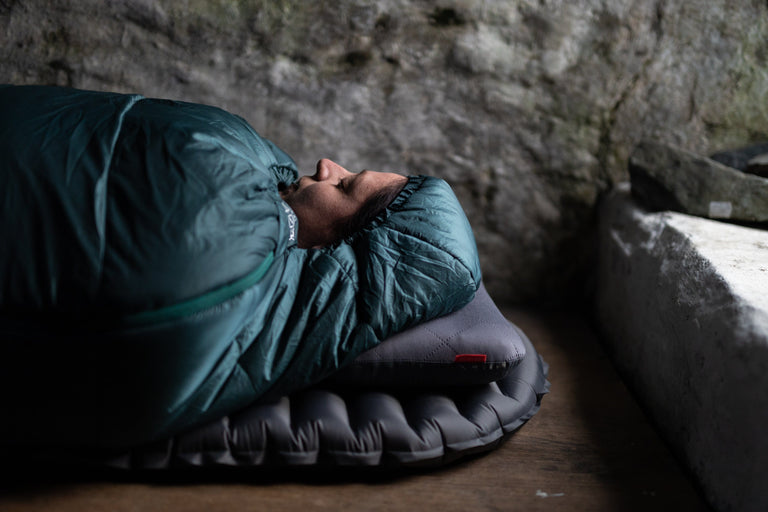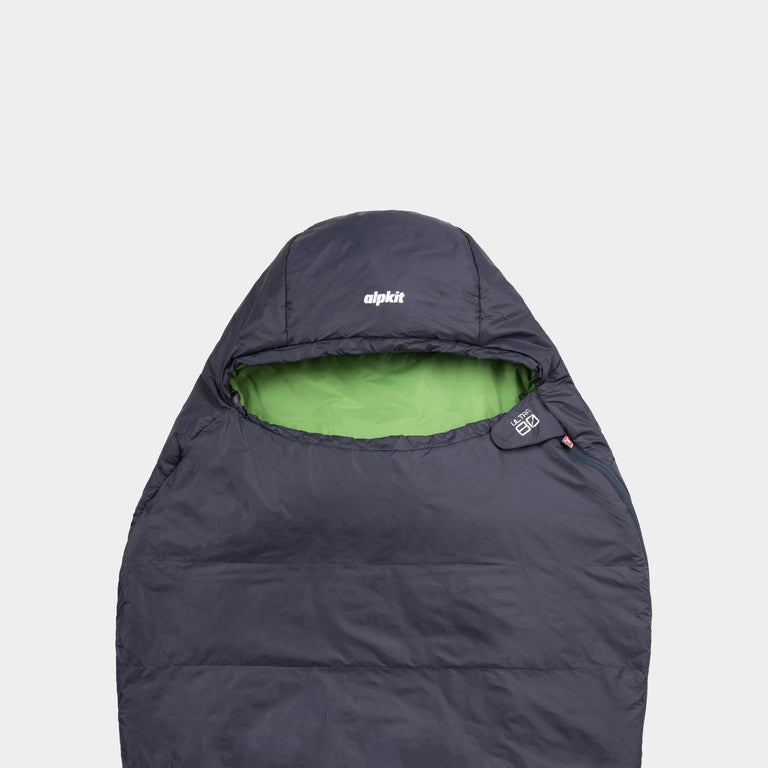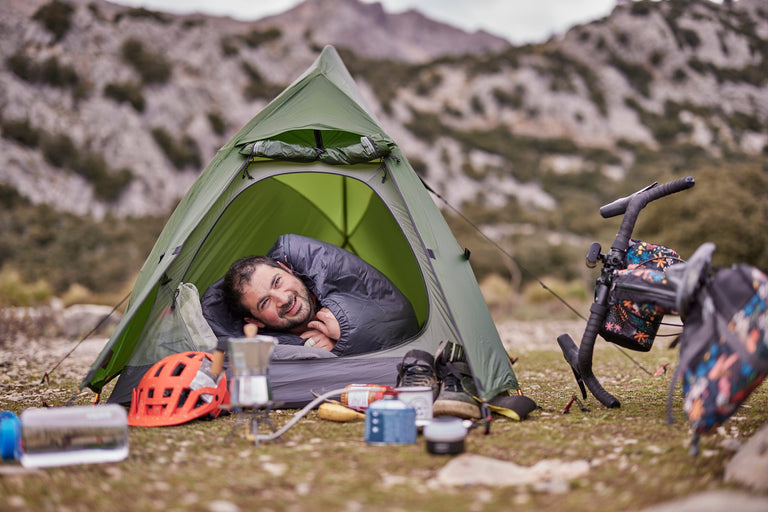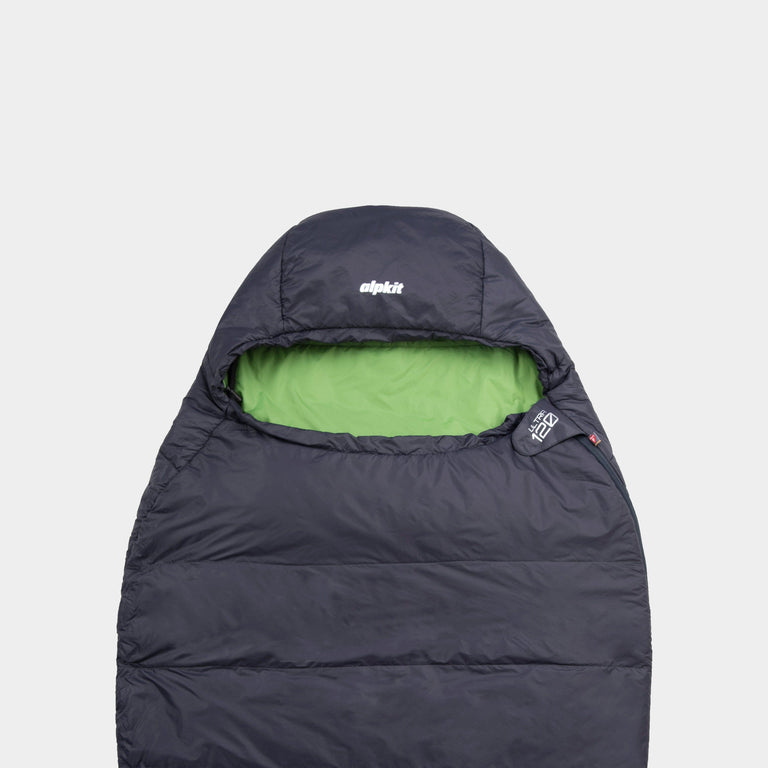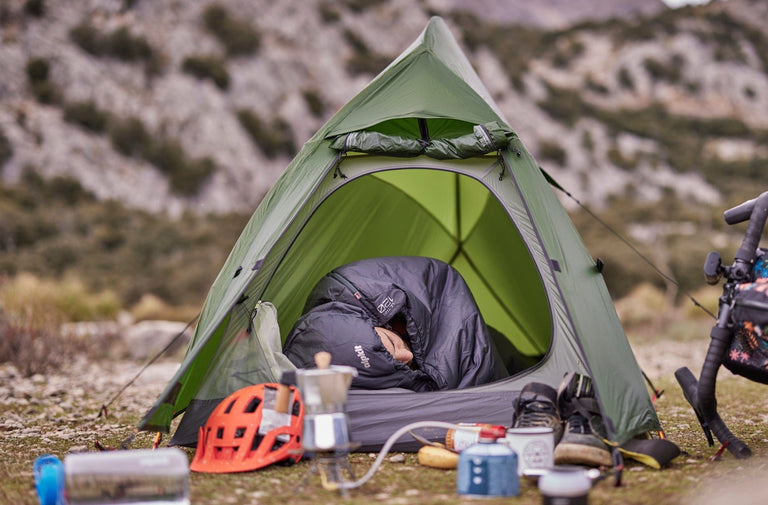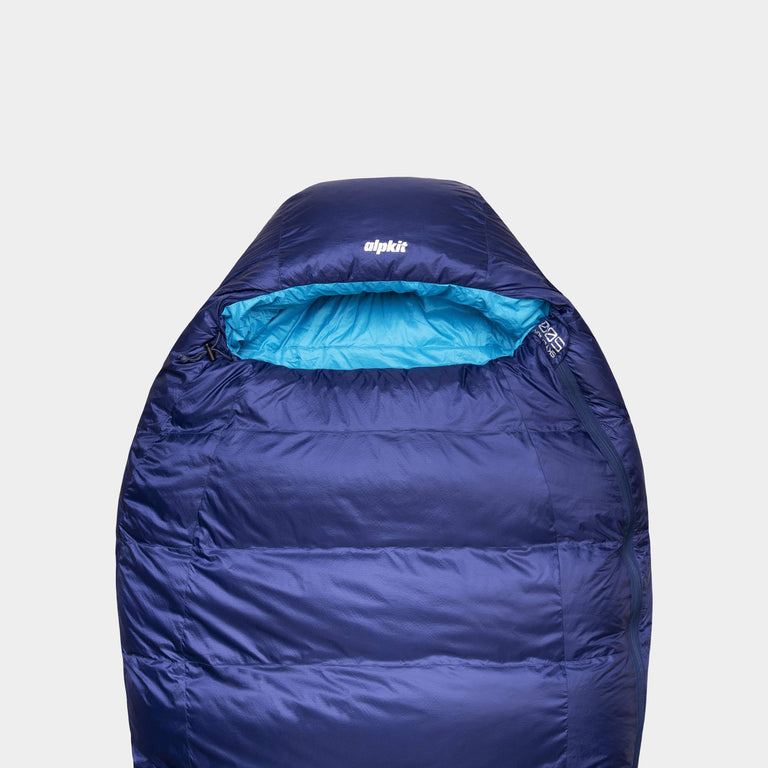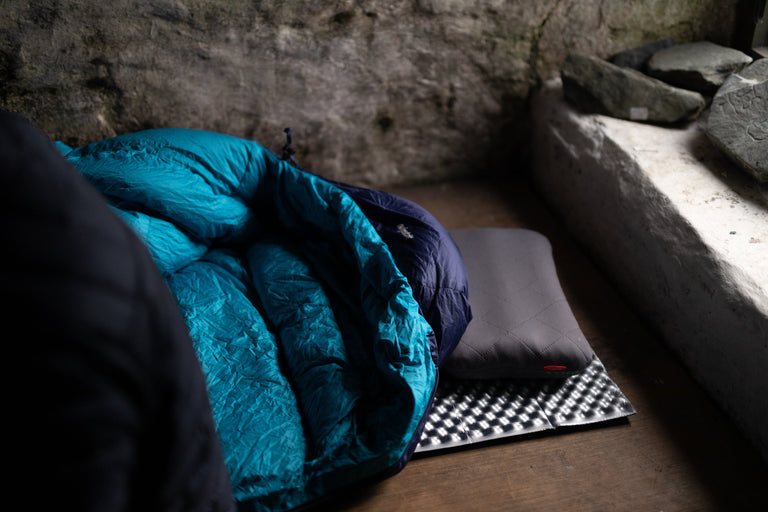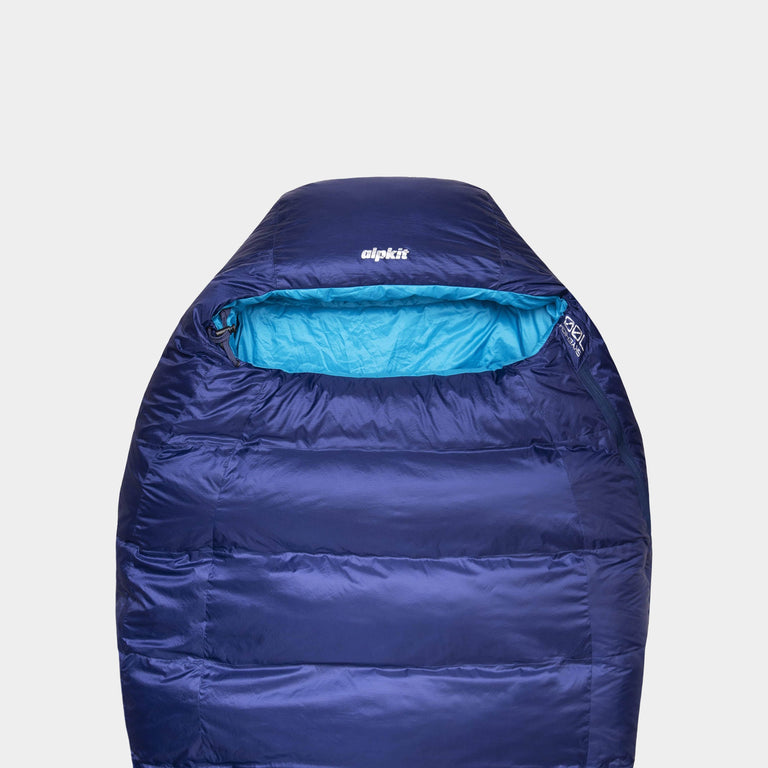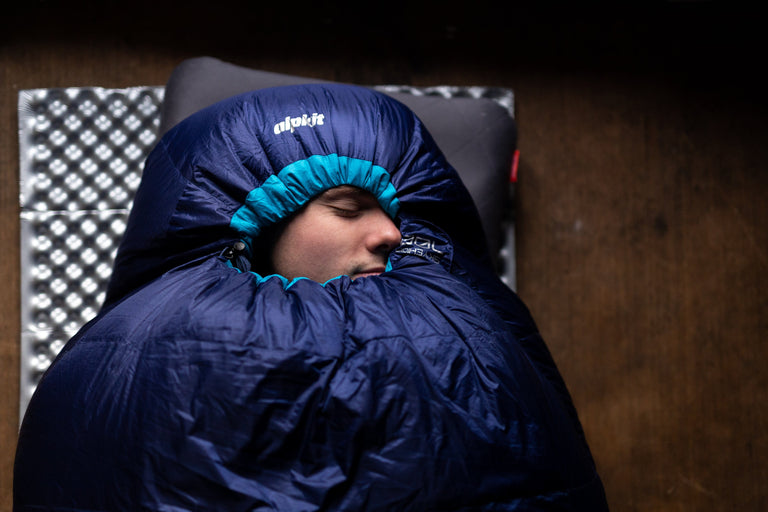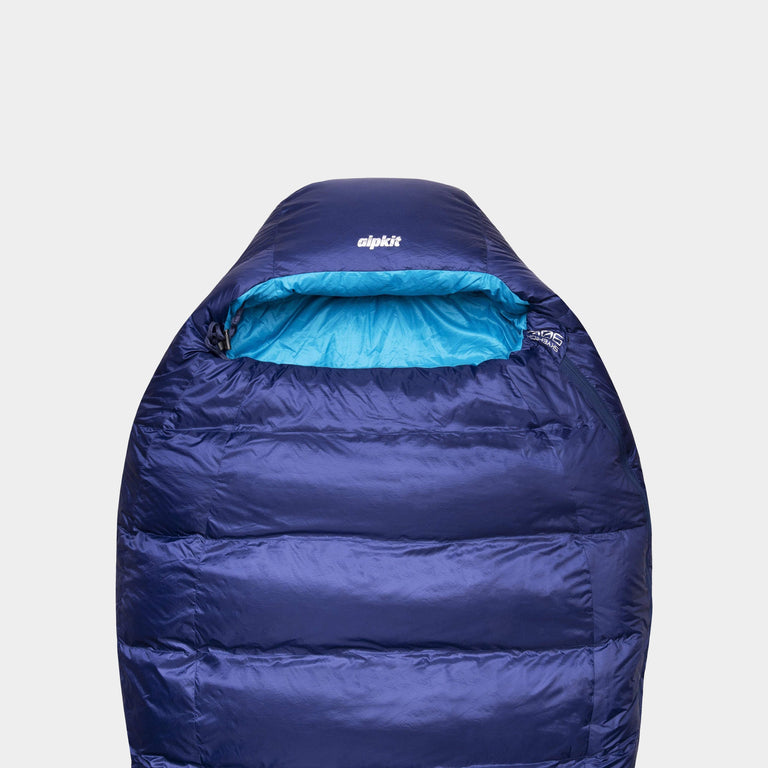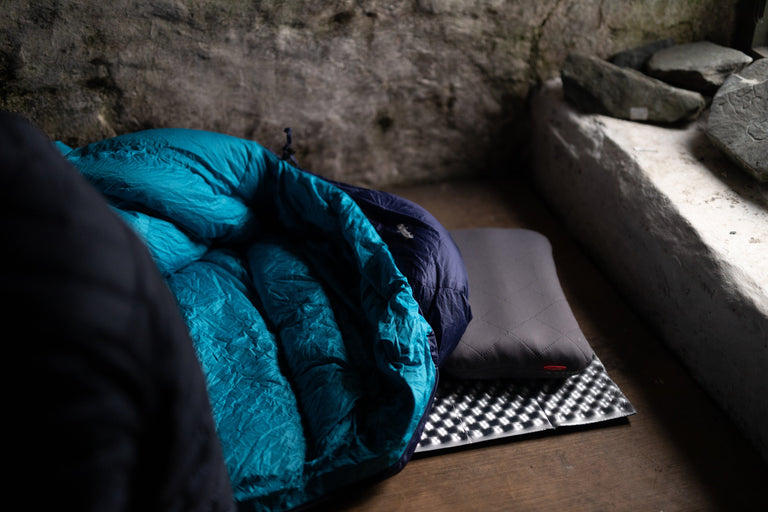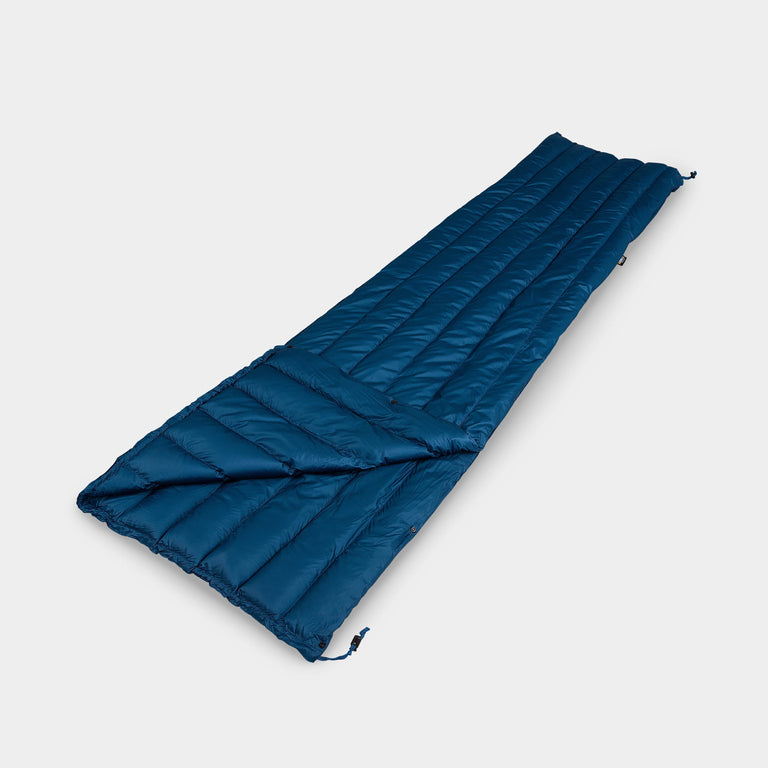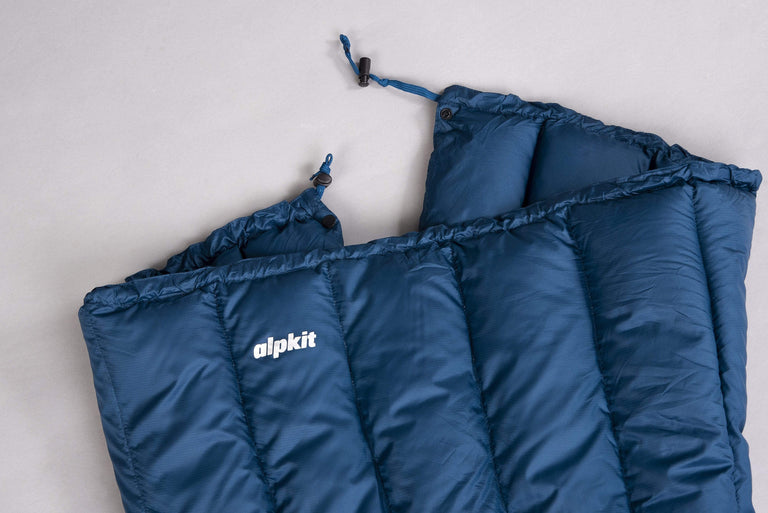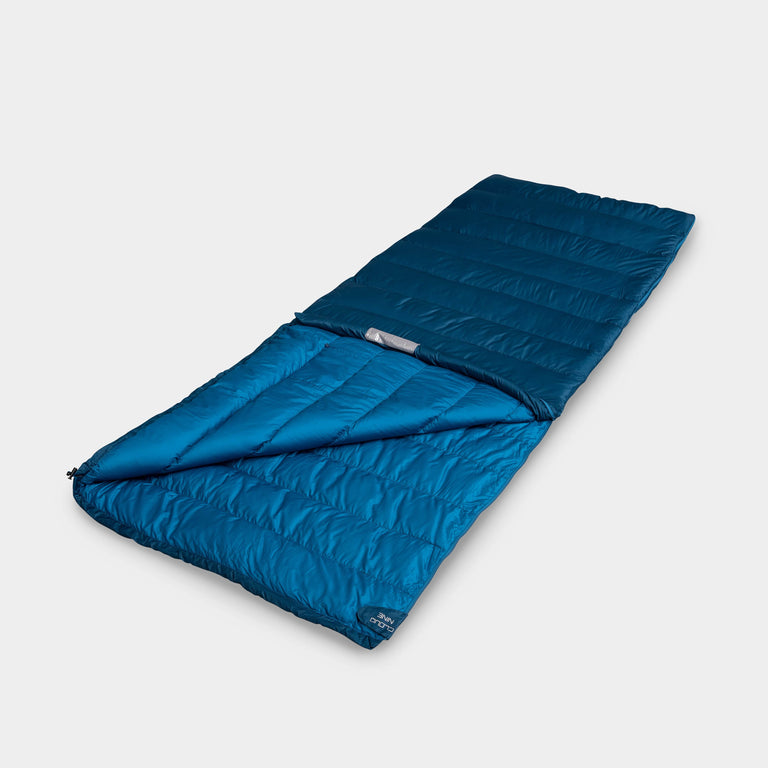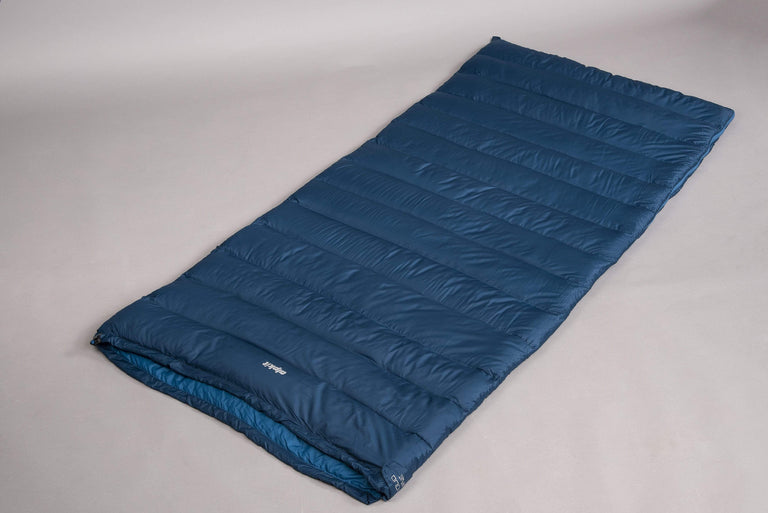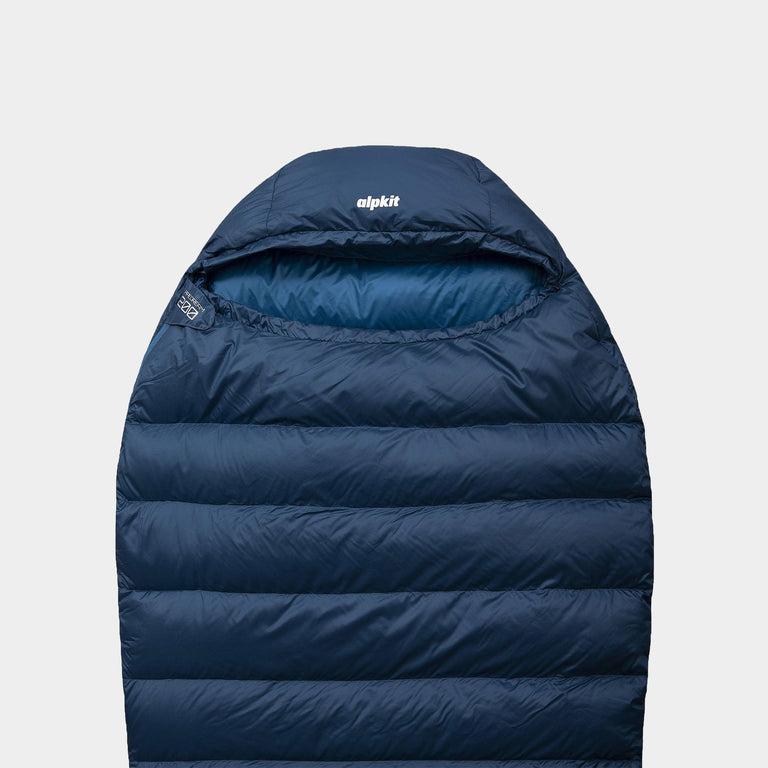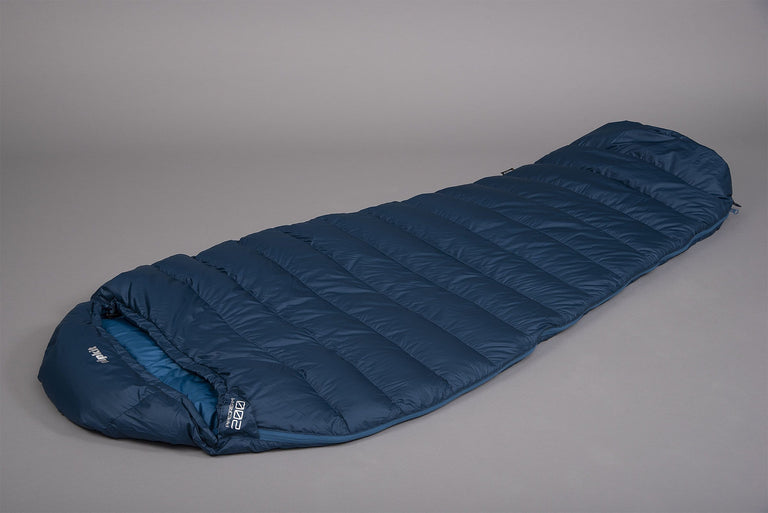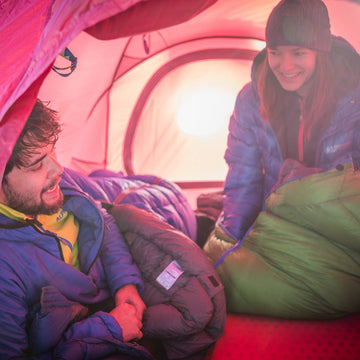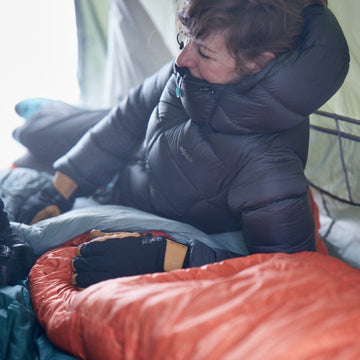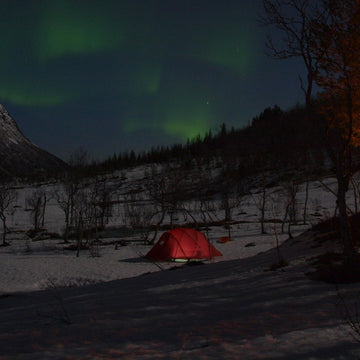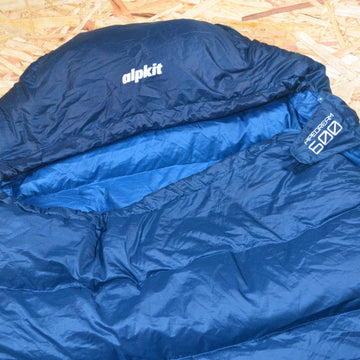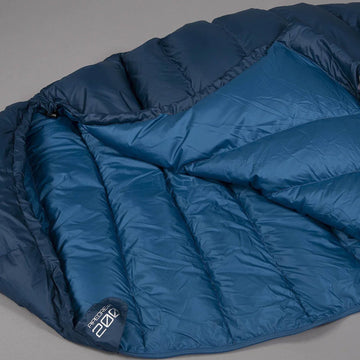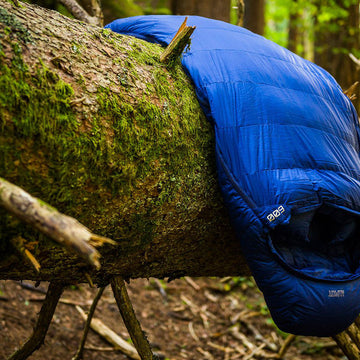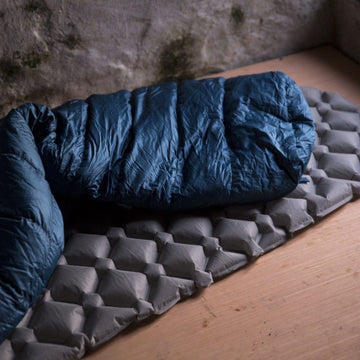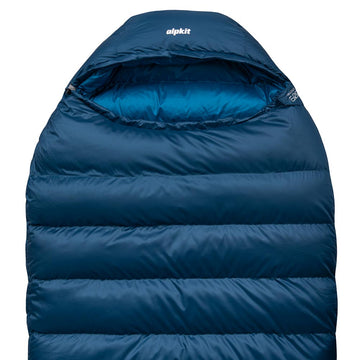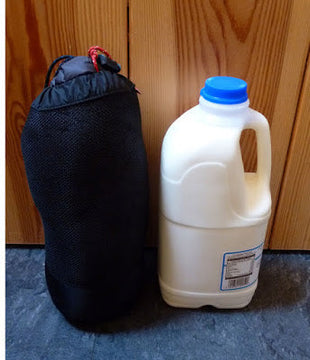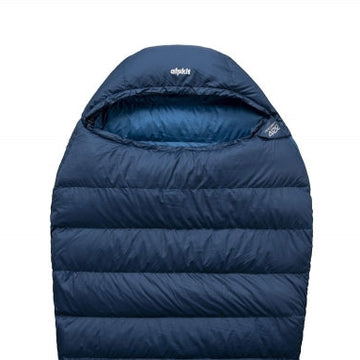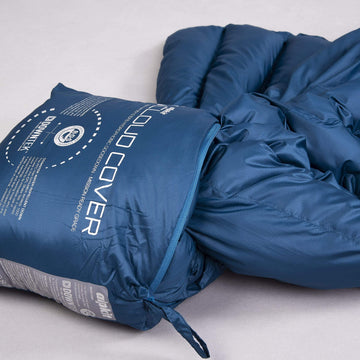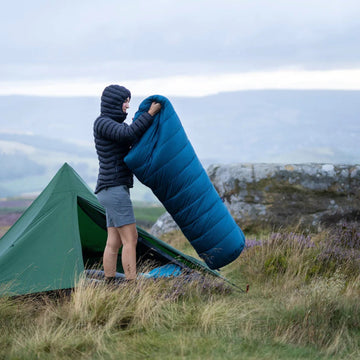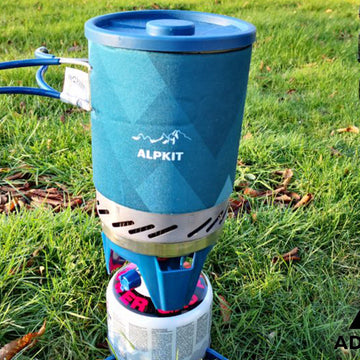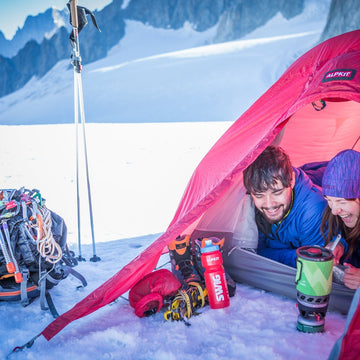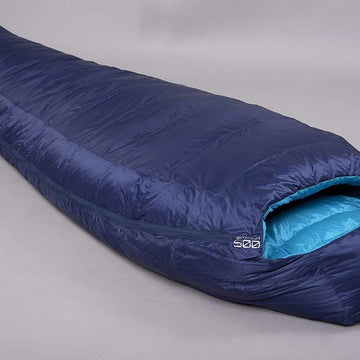
Confused by sleeping bag ratings? Wondering if you need a 2, 3 or 4 season sleeping bag to get you through winter? Here's our guide to sleeping bag seasons.
Here’s our guide to help you choose what season sleeping bag you need for your next camping trip:
- What do sleeping bag seasons mean?
- How warm does my sleeping bag need to be?
- What season sleeping bag do I need?
- What does the Alpkit sleep limit mean?
What do sleeping bag seasons mean?

Sleeping bag seasons let you know how what time of year your sleeping bag is suitable for and the range of seasons it can be used across. In short: the higher the number, the colder your sleeping bag can go down to. The season ratings Alpkit uses for sleeping bag warmth are based on typical British temperatures in each season. Camping in the height of summer? You only need a one-season bag. Camping in winter? You’ll definitely need a four-season bag.
What are 1- and 2-season sleeping bags
- Above 0°C
- Summer use (in Britain)
- Lightweight and compact pack-size
1-2 season sleeping bags are designed for summer camping in typical British conditions (unless you’re hard as nails like our Product Developer Rowan).
1-season sleeping bags are only really suitable for the height of summer. 2 season sleeping bags will extend your camping into late spring and early autumn – and give you a bit of extra reassurance on clear, cold nights.
Because they have the least insulation, these sleeping bags pack really small. This makes them ideal for ultralight summer backpacking and bikepacking, mountain marathons, or for use in warmer countries.
What is a 3-season sleeping bag?
- Down to 0°C to -5°C
- Spring to Autumn use (in Britain)
- Ideal balance of warmth and weight
3-season sleeping bags are easily the most versatile and will keep most of us warm from Spring through to Autumn – the majority of the UK camping season. These sleeping bags often use ‘box wall baffles’, an internal divider between the baffles which prevents cold spots.
We all sleep differently, but with the addition or subtraction of a few clothing layers, 3 season sleeping bags can be used right down to the point where frost starts forming. If you only intend to buy one sleeping bag, a 3-season bag is the way to go.
A good balance of warmth, weight and pack-size makes three-season sleeping bags suitable for anything from wild camping beneath Munros, walking the Pennine Way or cycle touring through the Outer Hebrides.
What is a 4-season sleeping bag?
- -5°C and below
- Winter camping (in Britain), camping at altitude
- Prioritising warmth for sub-zero temperatures
4 season sleeping bags are designed for the very depths of British winter camping. These sleeping bags will almost always use a box wall construction to reduce cold spots.
If you’re a cold sleeper or are camping up in the hills, you may find you need to use a 4 season bag for spring and autumn as well. The outside temperature can reduce by between 1°C and 3°C for every 300m climbed, so you may need to go up a season from the valley temperature.
You would take a four-season bag on a winter climbing trip, a summit-top wild camp in the colder months, or even abroad, if you intend to camp at altitude. In short, any situation where getting your sleeping bag wrong could result in a very miserable night’s sleep. or worse. gulp.
What is a 5-season sleeping bag?
- -30°C and below
- Extreme temperatures, not usually found in Britain
- For serious expedition use
If you’re buying a 5 season bag, you know you’re going to be in for some pretty extreme temperatures, either camping at very high altitudes or in the polar extremes of the planet.
These bags are highly specialised, sometimes using vertical baffles in the body for additional heat retention or more insulation in the hoods.
You would take a 5 season bag on a trekking trip to the Himalayas, high altitude alpine-style climbing or for expeditions to the Arctic circle.

How warm does my sleeping bag need to be?
There are many different factors, as well as external temperature, that determine how warm your bag should be. The key thing to remember is that you warm the bag. A sleeping bag is filled with insulation to retain heat, but it’s only as warm as the person in it. Consider the following factors:
How humid or wet will it be?
Damp cold always feels colder than dry cold. Moist air and materials conduct heat better, making you cold quicker. That’s why a damp day in Scottish winter can often feel colder than a crisp day in the Alps.
How high are you sleeping?
The temperature drops dramatically with each 300m of height gain. Sleeping on the top bunk probably won't have much effect, but even one night at altitude can deplete your body’s energy stores – staying warm uses much more energy.
How cold is the ground?
Conduction through the ground is the quickest way to lose heat whilst sleeping. If you are sleeping on frozen ground or snow, it is worth investing in a good sleeping mat as well as a sleeping bag. Deep mats with closed cell foam offer the best insulation.
What kind of shelter are you using?
A sealed up four-season mountain tent will keep you a lot warmer than an open tarp and bivvy bag, creating its own microclimate inside.

Hot vs cold sleepers
Everything from your height, to your metabolism and your percentage of body fat can affect how warm you sleep. You probably already know if you’re a hot or cold sleeper based on what temperature you keep your bedroom and what kind of duvet you use. If you’re a cold sleeper, go up a season. If you sleep warm, you might get away with a lighter bag.
Have you had a good meal?
Alpine climbers have been known to eat whole wheels of cheese before bed to keep warm on their precarious high-altitude bivvies! When your stomach is full, your body converts the energy in the food into body heat – it’s basically like adding more fuel to your internal fire. But when the fuel runs out, the fire does too. If you’re using your sleeping bag after burning through thousands of calories, you might want to opt for a warmer bag.
Do you move around in your sleep?
You’ll probably have to ask someone else to find this out! Fidgety sleepers push warmth out of their sleeping bags, sucking cold air in. The alternative to a warmer bag is asking your mates to wrap you up in bandages like an Egyptian mummy.

What season sleeping bag do I need?
Try to match your sleeping bag to the lowest night-time temperatures you expect to camp in, combined with how you personally sleep (whether you’re a warm or cold sleeper). If in doubt, opt for a sleeping bag that’s slightly warmer than the conditions you’re expecting. Hardcore alpinists and adventure racers might be willing to put up with a shivery night’s sleep, but most of us would rather be snug and warm after a long day.

What is the Alpkit Sleep Limit?
The Alpkit AK Sleep Limit is what the majority of our customers will find to be the tipping point between a comfortable and restless night’s sleep. We created the AK Sleep Limit to use alongside the EN13537 measurement and make it easier to match your sleeping bag to real-world conditions.
What does EN13537 mean?
The temperature figures you’ll usually see quoted on sleeping bags are the ‘EN13537’ ratings – a standardised European rating system. First introduced in 2005, the EN13537 tells you what a sleeping bag’s useable temperature range is. Because the test is standardised, these figures are really useful for comparing the warmth of sleeping bags, even between different brands.
What sleeping bag temperature ratings mean
Comfort - the temperature at which a standard woman* can expect to sleep comfortably in a relaxed position.
Lower limit - the temperature at which a standard man** can sleep for eight hours in a curled position without waking.
Extreme - the minimum temperature at which a standard woman can remain for six hours without risk of death from hypothermia (though frostbite is still possible).
*Based on a ‘standard woman’ being 25 years old, 160cm high and weighing 60kg.
**Based on a ‘standard man’ being 25 years old, 173cm tall and weighing 73kg.

